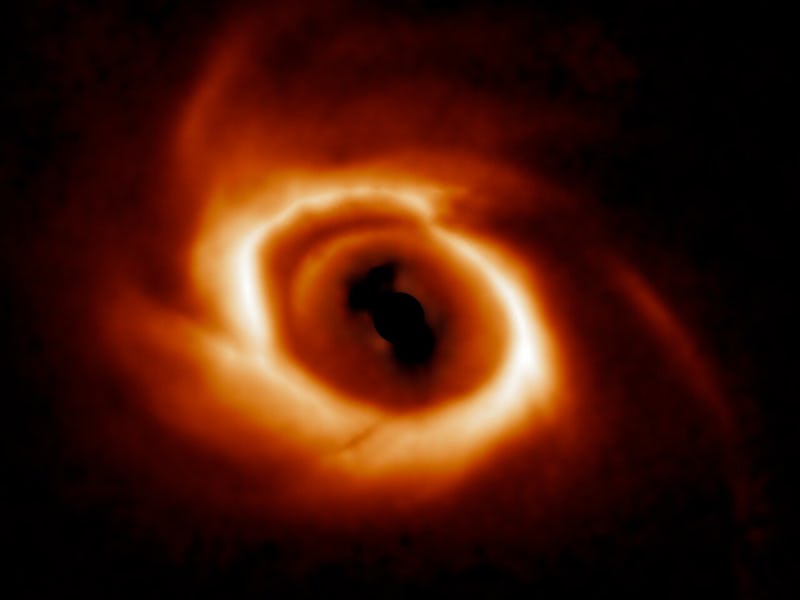Look! Cosmic dust swirling around these baby stars might become a future planetary system
Six different planet-forming disks around young stars shine in a new mosaic.

A new mosaic shows off protoplanetary systems in stunning detail. The wafting clouds of dust and gas glow in new ground-telescope images have unique appearances, and the different shapes the material makes when it swaddles big cosmic babies could give astronomers key insights into the formation of places like our Solar System.
Evan Rich at the University of Michigan studied 44 protoplanetary disks using the powerful Gemini South telescope in South America. Rich’s team found that the disk bodies look different depending on the size of the fledgling stars they cocoon. One possibility is that large stars form planets differently than little ones. Richa and colleagues released an image of six such disks from the set.
Why it matters — One important feature in these disks are rings, which indicate to astronomers that planets are developing there. When these worlds sweep up material to grow larger, they create sparse regions, producing the negative spaces between rings. The team submitted their new research on Sunday to the Astrophysical Journal.
Each of these six clouds might become its own future solar system.
Top left: Spiral disk HD 34700 A; Top center: Ringed disk HD 169142; Top right: Continuous disk HD 50138; Bottom left: Continuous disk MWC 614; Bottom center: Irregular disk MWC 789; Bottom right: Continuous disk HD 145718.
Oddly enough, “systems with small dust-grain rings are only found around stars with masses less than three times the mass of the Sun,” Rich says in Wednesday’s announcement of the images. “The planet formation process might be different for stars larger than three times the mass of the Sun.”
Planets may grow easier around smaller stars, making rings more prominent. One possible explanation for the lack of visible rings around larger stars is heat. Bigger disks might boast higher temperatures, which prevents ice particles from freezing onto dust grains, evaporating instead, and that “could inhibit outer disk ring formation for the higher mass disks,” says the study.
Ringed protoplanetary disk HD 169142. The Gemini South telescope took this picture by using its Gemini Planet Imager and looking into the constellation Sagittarius.
What they did — Rich focused on disks that were not “well-known” or “famous,” the study’s abstract states. They aimed to produce a “less-biased sample” that would be “suitable to probe the major stages of disk evolution during planet formation.”
They used the Gemini South Telescope to capture these mesmerizing views. The facility belongs to an organization known as NOIRLab — National Optical-Infrared Astronomy Research Laboratory. Despite its name, NOIRLab relies on telescopes beyond the borders of the continental United States. Gemini South sits roughly 1.7 miles above sea level atop the summit of Cerro Pachón in the Andean foothills of Chile. Its counterpart, Gemini North, is located on the summit of Maunakea in Hawaii.
The team put the 44 disks in the survey into categories such as “ringed,” “spiral,” “irregular,” and “continuous” (with no apparent gaps).
What’s next — Rich and colleagues acknowledge that more needs to be done to prove that larger disks don’t have rings. It may be that, since the larger disks in Rich’s sample are generally farther away than the others, maybe the rings are there but invisible to astronomers. Larger disks are home to larger stars, and their added brightness might also be obscuring what’s really going on there.
“Our survey is the first survey to search for trends in protoplanetary disks with stellar masses [larger than] three [Suns],” the study authors wrote. “Thus future work needs to verify these findings and search for massive systems that host ringed and gaped structures.”
In the meantime, scientists can bask in the fascinating views of baby star systems.
This article was originally published on